For a carefree and healthy garden, plant these Pest Resistant Flowers that effortlessly evade unwanted bugs!
If you detest using chemicals to repel insects and other unwanted visitors in your garden, try these pest-resistant flowers. They not only remain pest-free but also save other plants from infestation. These beautiful blooms resist pesky bugs through their fragrance, colors, and essential compounds. Let’s explore!
Best Pest Resistant Flowers
1. Marigold
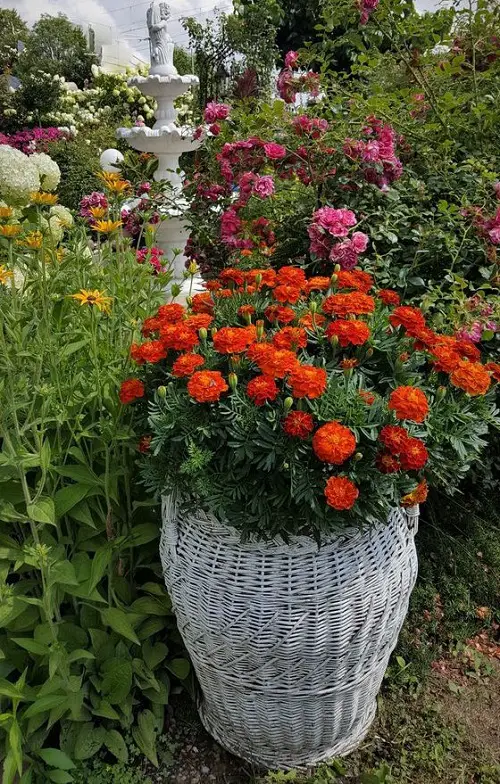
Botanical Name: Tagetes
The unassuming and abundant marigold is an excellent defender against pests! A member of the aster family, its blooms are bright, bold, and edible. However, pests hate the strong, musky scent of its fiery flowers and crushed foliage. These blooms resist multiple pests apart from nematodes, and their pungent smell is excellent at keeping bigger animals like deer at bay!
Check out varieties like Signet Marigold, which are particularly strong-scented for this purpose.
2. Lavender
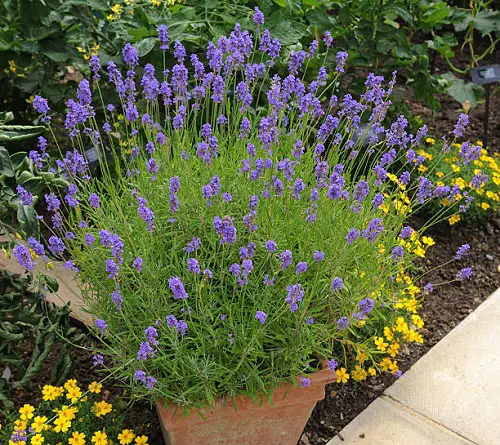
Botanical Name: Lavandula
Lavender packs it all in its petite frame! Its showy purple blooms are fragrant and edible, essential in lending aroma and flavor to many cuisines. Culinary lavender has less oil than aromatic lavender, which is used in soaps and perfumes.
Its scent comes from the essential oil it contains, which is also a natural insecticide. So, various creatures, from moths, fleas, and flies to rabbits and deer, steer clear of it!
3. Lantana

Botanical Name: Lantana camara
Next on the list of best pest-resistant flowers is Lantana. This perennial shrub can grow up to six feet tall, especially in its native regions of West Indies and Mexico. Producing colorful clusters of spherical blooms, even its rough, round leaves are fragrant.
With a high concentration of methanol in its leaves, this pest repellant is so potent that some even place its twigs in rice containers to prevent bugs from entering. However, this plant is notoriously weedy and toxic if ingested. So plant with caution.
4. Chrysanthemum

Botanical Name: Chrysanthemum morifolium
With showy flower heads in myriad hues, “mums” may seem just like pretty ornamentals, while in reality, they are the stuff of nightmares for pests. This plant comprises a compound called pyrethrin that attacks the nervous system of insects and even deters female mosquitoes from biting!
Therefore, you can simply plant them in a spot that receives full sun, give them well-draining soil, kick back your feet, and enjoy its pest-free charm!
5. Geranium

Botanical Name: Pelargonium
Geraniums may lure in both humans and pollinators with their variety of fragrances, but they effectively repel some serious pest problems that can affect other plants. With velvety leaves and bloom clusters in pink, white, and lavender, these plants are often used to shield vegetable crops from beetles, leafhoppers, cabbage worms, and mosquitoes.
Go with highly fragrant varieties like lemon-scented or peppermint geraniums if the agenda is to tackle pests.
6. Sage
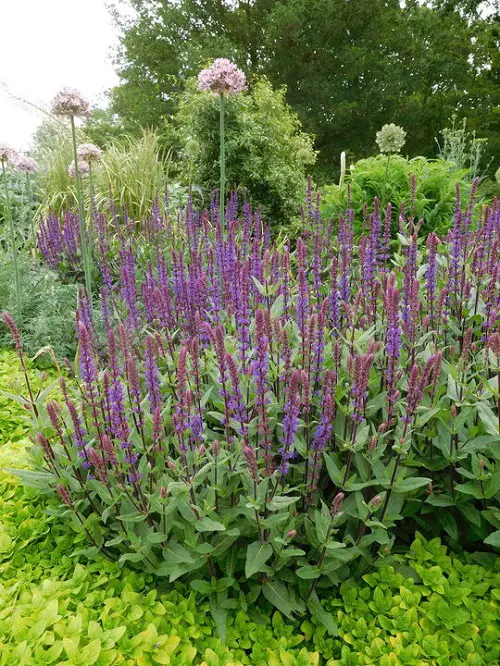
Botanical Name: Salvia
Salvia is a member of the mint family and consists of many flowering species and cultivars. However, almost all of them are famous for their powerful, musky, and earthy aroma.
Salvia species like Mexican Bush Sage or Culinary Sage have pungent essential oils known for their insecticidal properties, turning away moths, flies, rabbits, and deer with their intense scent. Sage is even mildew-resistant, and you can pair this herb with these plants to get the most out of all!
7. Catnip
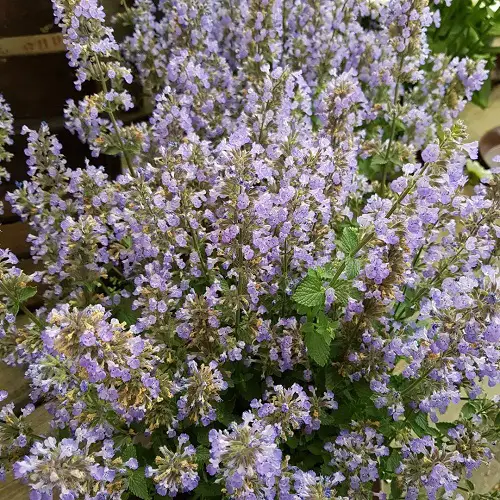
Botanical Name: Nepeta cataria
Catnip is called so because cats are furiously drawn to its scent! Its fragrant, edible leaves are also used in soups and other dishes. With tiny lavender flowers that grow on spike-like racemes, catnip contains iridoids that trigger an insect’s defense mechanism, driving it away from the plant.
8. Zinnia

Botanical Name: Zinnia
Zinnia plant is selective with its visitors, attracting good insects and turning away harmful intruders. Grown for its long-lasting, showy, spherical blooms, this low-maintenance flower is relatively pest-free. It even turns away rabbits and deer, making it perfect for boundaries and garden borders.
Easy beginner flowers, check out these zinnia varieties to pick and choose from for your garden.
9. Rosemary
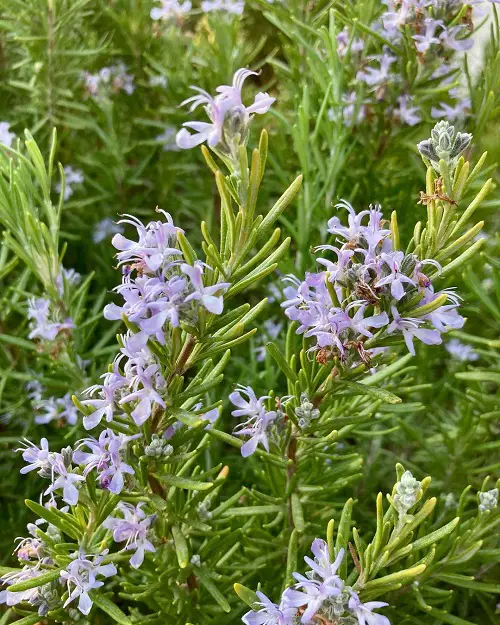
Botanical Name: Salvia rosmarinus
Rosemary is the most popular member of the mint family, known for its aromatic, needle-like leaves. Its strong scent, similar to sage, naturally repels pests like aphids, mosquitoes, and cabbage moths. This evergreen herb is also an excellent companion plant for vegetables like sweet peppers, deterring pests that frequent it. not only deters pests but also adds culinary flavor to dishes.
There are several other benefits to growing rosemary in the home garden. Check them out!
10. Yarrow
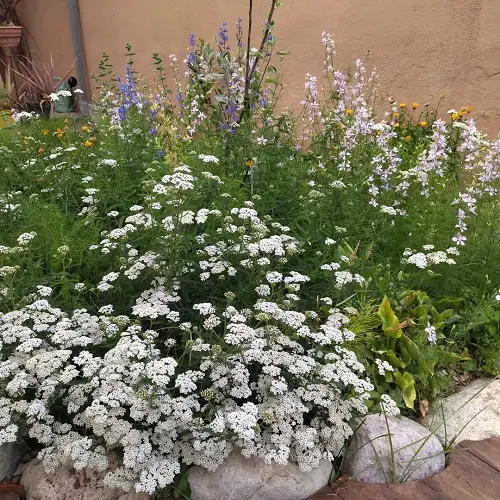
Botanical Name: Achillea millefolium
Next, we have Yarrow, a versatile plant known for its feathery foliage and flat-topped clusters of small flowers. Its aromatic oils repel insects, including aphids, Japanese beetles, and mosquitoes, while attracting beneficial insects like ladybugs that feed on other pests.
Yarrow is drought-tolerant and adaptable to various soil conditions. Use it to decorate borders, rock gardens, or as a cut flower!
11. Borage

Botanical Name: Borago officinalis
Last on our list is a fast-growing annual herb called borage! Thanks to its culinary and pest-repelling qualities, borage is a delightful addition to any garden. Its strong scent effectively deters aphids and tomato hornworms while attracting pollinators like bees and butterflies.
It also produces star-shaped, blue edible flowers with a refreshing cucumber-like flavor.


